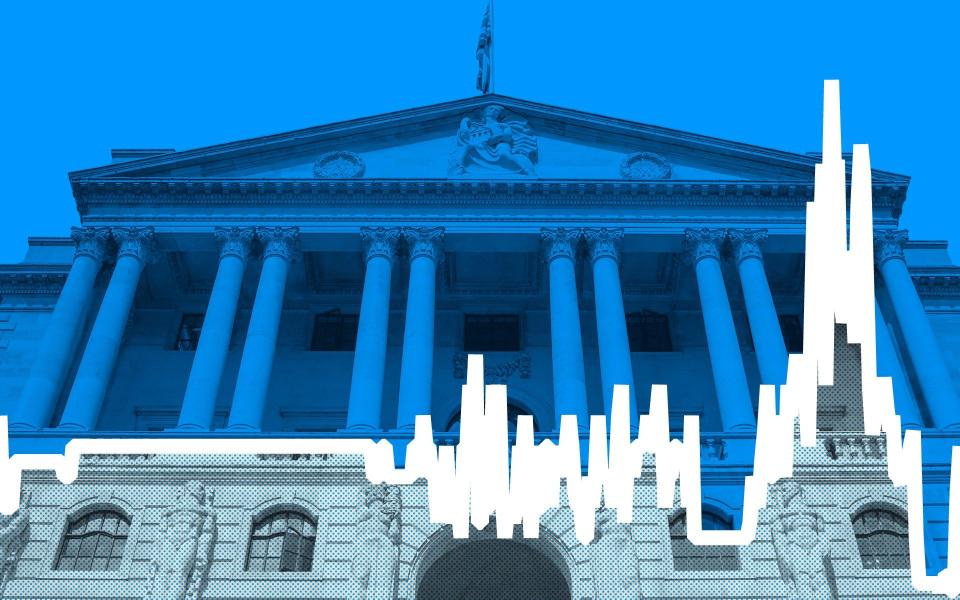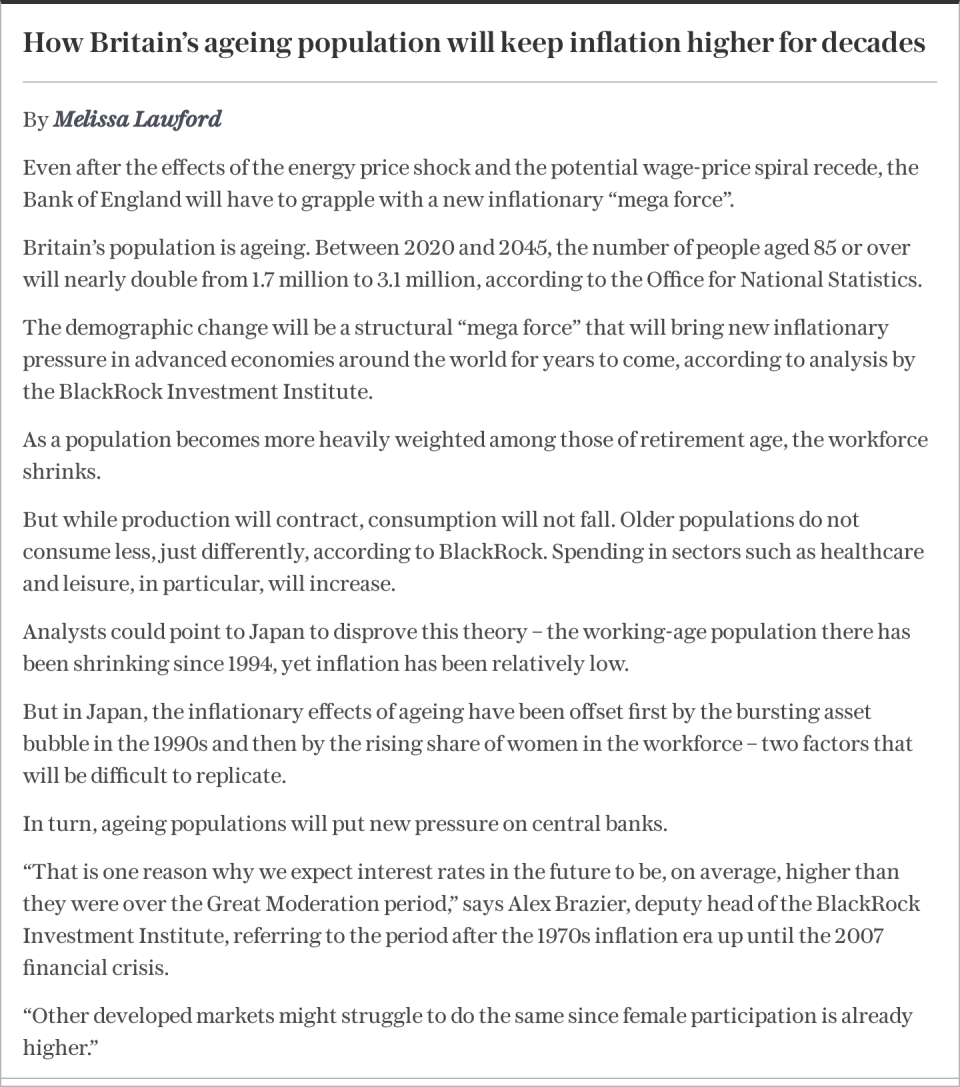
In the aftermath of the financial crisis, Threadneedle Street slashed borrowing costs to 300-year lows – knocking five percentage points off interest rates in the space of just a year.
Many experts believed that borrowing costs would be permanently lower.
This conviction is still widespread. Economists – including at the Bank of England and the International Monetary Fund – still argue that after this bout of high inflation, rates will eventually return to post-financial crisis lows.
But as the battle to cool the economy drags on, voices of dissent are growing louder.
Megan Greene, an economist who is joining the Bank of England’s rate-setter panel, earlier this week warned that ultra-low rates were by no means guaranteed.
It would be “a mistake for central bankers to take comfort in the notion that inflation and rates will automatically go back to the low levels we saw before the pandemic,” she warned.
The implications of who is right are immense for the economy.
Permanently higher interest rates would push up the cost of borrowing for governments bloated with debt after the pandemic and make mortgages much more expensive to service.
A percentage point increase in borrowing costs wipes out £20bn of spending power for the Treasury annually, according to the Office for Budget Responsibility.
To put this into perspective, Chancellor Jeremy Hunt has left himself only a wafer-thin fiscal buffer of £6.5bn by 2028.
In the US, rate-setters at the Federal Reserve have started raising their expectations of where borrowing costs will settle in the long run, barring any major shocks.
All of these factors depend on at what level central banks can set interest rates without them either stoking or restricting demand.
One of the most prominent economists arguing that this level is moving higher is Charles Goodhart, a former member of the Bank’s Monetary Policy Committee.
Growing protectionism amid US-China tensions and shrinking labour forces as populations age are among the key factors that will raise prices and thereby interest rates, he says.
He believes that in the longer term interest rates will hover around 4.5pc – only slightly below the current level of 5pc, which is the highest borrowing costs have been since the financial crisis.
“If you want to understand the future, you have to understand the past,” he says.
Interest rates had been falling fairly steadily since the 1990s until Covid hit.
Many economists believe that this has happened because of ageing populations fuelling a growth in savings for retirement and slowing productivity gains.
Andrew Bailey, the Governor of the Bank of England, made this argument in a speech back in March.
Households who are effectively lending money to banks by depositing their savings with them will do to a much greater degree.
The remuneration – meaning the interest savers receive – will therefore fall.
Others, such as Goodhart whose interpretation of the past differs from Bailey’s, argue that the ratio of workers to inactive people will fall. Some economists also highlight that older people tend to spend a greater portion of their income on services as they are mortgage-free.
“The last three decades from about 1990 to about 2020 were extraordinarily historically unusual,” Goodhart says.
Favourable geopolitical developments such as the collapse of the USSR, the rise of China and growing labour forces led to “much lower increases in prices and wages than would normally happen”, he says.
“Rather than sort of continuing the norm of the last 30 years, we’re going to go into an opposite situation where labour is going to be much tighter, much more difficult,” he adds.
Other trends such as higher spending on defence and the vast investment required to fund the net zero transition will also add to inflationary pressures, he says.
The Government is ramping up spending on defence by £11bn over the next five years, a decision that followed Russia’s invasion of Ukraine.
Meanwhile, ministers are under pressure to unveil a British response to the US’s $369bn (£290bn) Inflation Reduction Act and the EU’s Green Deal – both funnelling vast amounts of borrowing into the net zero transition.
Labour recently rowed back on its plans to borrow £28bn a year for the same purpose amid rising borrowing costs.
Kallum Pickering, of Berenberg, says: “We are greening our economies much faster than the relative price of green technology would if the market was to be left to its own devices, and hence, this is inflationary.”
Pickering expects the Bank of England’s base rate to settle at around 3pc to 4pc in the longer term – well above the average over the past 15 years.
While technological advancements such as the rapid rise of artificial intelligence have the potential to kickstart sluggish productivity, it also has implications for interest rates.
“Technological development has disinflationary effects in the sector that it affects,” says Pickering. “But if those technological developments are large enough to significantly improve living standards, what one often finds is that the confidence effect adds to demand by more than the technology adds to supply.
“Therefore, weirdly enough, industrial revolutions in the past have tended to be inflationary rather than disinflationary.”
Analysts at BNP Paribas recently warned that while they still believe that interest rates will trend downwards over the coming decades because of higher retirement savings, in the more immediate future they are likely to move higher.
They argued that the surprising resilience of economies like the UK, the US and the eurozone in the face of soaring rates suggests that the level at which interest rates neither restrict nor stoke demand may have shifted upwards.
“It suggests limited scope for rate cuts without providing excessive stimulus to the economy, raising the risk that inflation will reaccelerate once central banks ease off the brakes,” they said.
“In that regard, it would support our long-held view that bringing inflation sustainably back to 2pc may be challenging.”
Economists who believe interest rates will remain high permanently are still in the minority.
But if they are right it poses an uncomfortable looming problem.
“We’ve already got very high debt ratios and they’re going to get higher. That is going to be a fiscal problem, which hasn’t really yet been faced at all,” Goodhart says.










